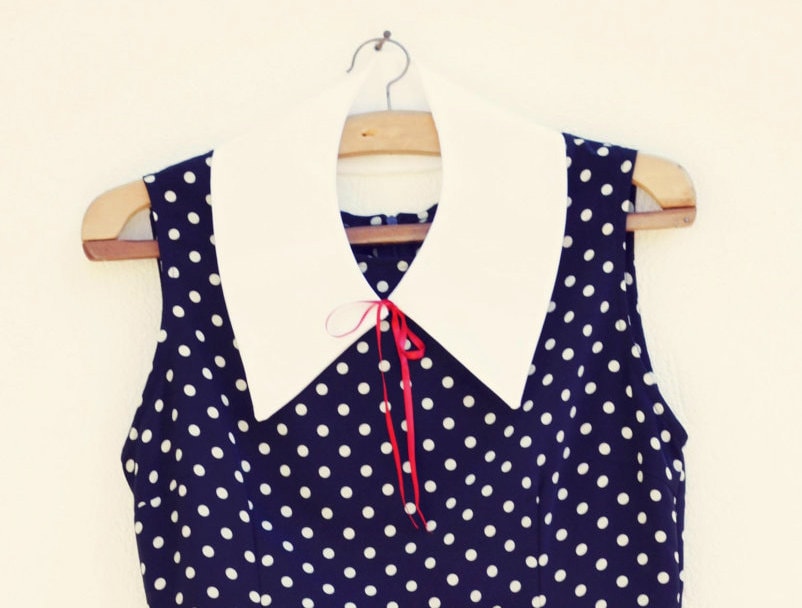Here we go with our last variation!
If your fabric is see-through or you want an extra layer for warmth, let's see the steps to add a lining.
Basically, you will need to cut another dress in your lining material (you will need about 1,75m of fabric), omitting the sleeves and the facings. You'll also skip the facings in your main fabric.
I also recommend to cut the lining skirt panels about 3 cm shorter than the main fabric, so the lining will be nice and concealed at the bottom.
I also recommend to cut the lining skirt panels about 3 cm shorter than the main fabric, so the lining will be nice and concealed at the bottom.
You will construct everything as usual, but the side seams of your lining are going to be the opposite of your main fabric. I'm borrowing this illustration from Eléonore, because it's a really foolproof way to explain what I mean.
After you constructed everything, be sure to press in the seam allowance of the zipper opening of the lining.
After you constructed everything, be sure to press in the seam allowance of the zipper opening of the lining.
Pin the neckline of the lining to the dress with right sides together and stitch.
Notch the seam allowance and turn wrong sides together.
Press the neckline carefully and topstitch. If you don't like the look of topstitching, understitch the lining, so it will lay in place.
Pin and baste the armholes wrong sides together. Assemble the sleeve including the lining into the seam and finish the seam allowance.
Pin and baste the armholes wrong sides together. Assemble the sleeve including the lining into the seam and finish the seam allowance.
Now, the only delicate part: hand stitching the lining to the zipper.
On the wrong side of the garment, pin the lining to the zipper tape (baste, if you need more security) and stitch in place using a fell stitch. If you're not familiar with this hand stitch, here's a quick tutorial and a video.
On the wrong side of the garment, pin the lining to the zipper tape (baste, if you need more security) and stitch in place using a fell stitch. If you're not familiar with this hand stitch, here's a quick tutorial and a video.
At this point, hem the skirt and the lining separately and you're done!
Hemming just the skirt
Cut the skirt panels in your lining material and stitch the right side seam.
Stitch the left side seam sewing from the end zipper mark down to the hem.
Attach the lining skirt at the waist seam, right side of the lining skirt against the wrong side of the bodice (the bodice needs to be sandwiched between the skirt and the lining).
Stop your seam on both sides about 3cm before the zipper, this way you'll be able to fold in the seam allowance and hand stitch the zipper opening of the lining to the zipper tape.
Stitch the left side seam sewing from the end zipper mark down to the hem.
Attach the lining skirt at the waist seam, right side of the lining skirt against the wrong side of the bodice (the bodice needs to be sandwiched between the skirt and the lining).
Stop your seam on both sides about 3cm before the zipper, this way you'll be able to fold in the seam allowance and hand stitch the zipper opening of the lining to the zipper tape.


















































